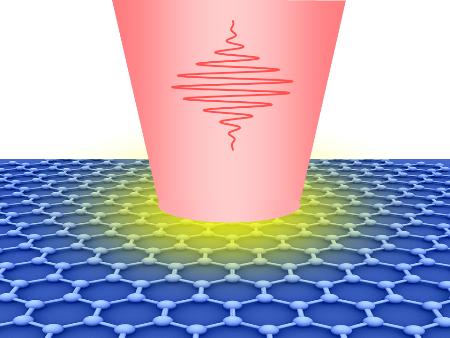A research team led by Stephan Winnerl at Helmholtz-Zentrum Dresden-Rossendorf (HZDR) in partnership with researchers at the Georgia Institute of Technology, the Grenoble High Magnetic Field Laboratory and the Technische Universitat (TU) Berlin has for the first time discovered the lifespan of electrons at low energy levels in graphene, paving the way to develop rapid optoelectronic and electronic components.
 Investigations of graphene were done with the Free Electron Laser at HZDR. (Credit: (c) AlexanderAIUS / HZDR)
Investigations of graphene were done with the Free Electron Laser at HZDR. (Credit: (c) AlexanderAIUS / HZDR)
Unlike other semiconductors, graphene has a zero band gap with its energy bands touching each other. Hence, rather than releasing light, the wonder material absorbs the low-energy radiations that are lower than the visible spectrum including infrared and terahertz light, making it an ideal material for making detectors.
The determination of lifetime of graphene electrons at certain energy levels is highly significant in developing graphene-based fast optoelectronic and electronic components. Ultrafast observation methods are required to study such processes, as they happen at the range of ps. In the experiments carried out at the HZDR, the graphene samples were exposed to light having unprecedented longer wavelengths, which was produced by the short radiation pulses of the free electron laser (FEL) of the HZDR. This approach allows the researchers to detect the lifespan of electrons close to the point of contacts of the energy bands.
The FEL used lighting having various wavelengths within the infrared spectrum to agitate the graphene samples. The scientists found that the electrons’ lifetime varied with the energy of atomic lattice oscillations and light particle energy that agitates the electrons. If the lattice oscillation energy is higher than the light particle energy, the electrons will have a longer lifetime. On the other hand, the electrons will linger shortly, if the lattice oscillation energy is lower than the excitation energy.
The TU Berlin provided the model calculations to confirm the HZDR’s experimental data on the physical processes in graphene, which in turn helps understanding the optical and electronic properties of the novel material in a better manner.